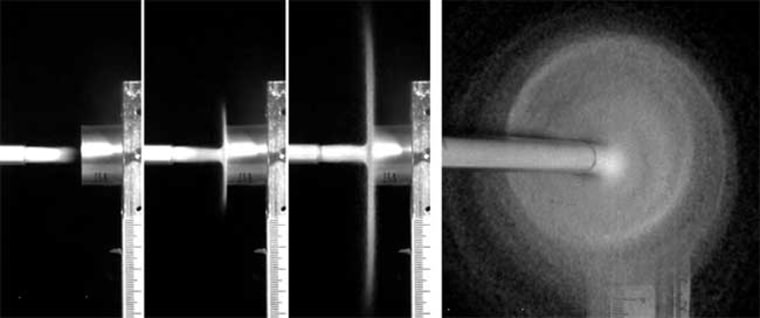British poet William Blake once wrote that a world was contained in a grain of sand. Physicists have done one better, finding a surprising link between streams of flowing sand grains and the birth of the universe.
A new study in the latest issue of the journal Physical Review Letters finds that flowing sand grains show liquid-like behavior also witnessed in particle-collider experiments that simulate our universe's first moments.
"Nature plays the tricks that it knows how to play over and over again," said study team member Sidney Nagel of the University of Chicago.
Macroscopic particles visible to the naked eye and invisible particles smaller than an atom sometimes behave in similar ways. Nagel and his colleagues found that flowing sand grains create a cone-shaped "envelope structure" after striking a coin-like small, flat, circular object.
Similar structures have been observed in the "quark-gluon plasma" experiments conducted at Brookhaven National Laboratory in New York with the Relativistic Heavy Ion Collider (RHIC). The quark-gluon plasma was a super hot and extremely dense soup of subatomic particles scientists think existed for a few millionths of a second after the .
An experiment performed in 1883 that involved shooting water onto a small, circular target found that the water molecules also fan out into a thin cone before surface tension brought them back together to form a shape resembling a bell.
"That's the amazing thing about physics," Nagel said. "The laws you have at one level really are the same as at other levels, or at least influence what happens at other levels."
Nagel says the result of his team's experiment could change how scientists interpret the RHIC data.
